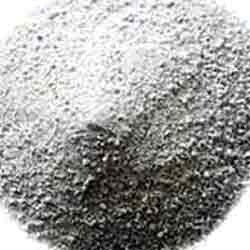CHLORINE NaDCC 55%, 25kg, granules + measure spoon, bucket
Valid Article
CHLORINE NaDCC 55%, 25kg, granules + measure spoon, bucket
Definition
Disinfectant used mainly for treating water but also to prepare chlorine solutions for disinfection of surfaces or instruments.
NaDCC granules exist in 2 different chemical forms: anhydrous and dihydrate.
Synonym
sodium dichloro-s-triazinetrione or sodium troclosene.
Specifications
Granules of NaDCC (only the dehydrate form is supplied to the field).
These are white crystalline granules with a "slight" odour of chlorine. They have the following characteristics:
Dehydrate | |
CAS number | 51580-86-0 |
Chemical formula | NaC3N3O3Cl2·2H2O |
Available chlorine | 55.0% - 57.0% |
Solubility in water | 28 g/100 g |
Transport Dangerous Goods
NaDCC, both in dehydrate and in anhydrous form, is regulated for air transport, with conditions:
- UN 3077 , class 9, code M7, hazard id no.90, packing group III
- IMO/ICAO/IATA: UN No.3077, class 9, packing group III
- requires specific packaging and labelling until final destination
Ask for an MSDS (Material Safety Data Sheet) from your supplier; this should contain all necessary information.
Instructions for use
Treatment of water
For chlorinating drinking water, a 1% available chlorine stock solution (or "mother solution") is used (= 10 g available chlorine per litre). It is made with 10 x (100/55) = 18 g NaDCC granules (55% available chlorine) for 1 litre of water. The NaDCC granules are fully effervescent.
The stock solution should be kept in an airtight, opaque, non-metallic container, away from light and heat. It should be replaced every week.
Turbid water should first be brought to a turbidity of < 5 NTU before being treated with chlorine. (In acute emergencies, a turbidity of up to 20 NTU is also acceptable).
To achieve this, turbid water should be filtered, clarified or allowed to settle. In urgent situations, water can be treated with a fix dose of 5 mg/l. In other situations the dose of chlorine added to raw water should be adapted to the chlorine demand to obtain a free residual chlorine level of 0.2-0.5 mg/l for a pH < 8 and 0.5-1 mg/l for pH > 8.
See "Public Health Engineering in Precarious Situations", MSF, 2nd edition, 2010:
- T.B. 2.19 Chlorine-generating products
- T.B. 2.21 Batch chlorination of drinking water
Preparation of chlorine solutions
See "Public Health Engineering in Precarious Situations", MSF, 2nd edition, 2010:
- T.B. 2.20 Preparation and use of chlorine solutions for disinfection
Remark
Use a pool-tester to check the presence of free residual chlorine.
See "Public Health Engineering in Precarious Situations", MSF, 2nd edition, 2010:
- T.B. 2.22 Monitoring chlorination
Precautions for Use
- NaDCC granules are used mainly to prepare drinking water but can also be used as a disinfectant solution.
- Prepare solutions in non-metal containers, immediately before use.
- Avoid inhaling vapour and dust when handling NaDCC.
- Do not expose to a naked flame, and do not incinerate.
- Never mix NaDCC granules with calcium hypochlorite powder (HTH®): the mixture undergoes a chemical reaction and may explode!
- Do not mix with detergents since toxic chlorine gas could be released.
- Do not mix with acid solutions since this releases toxic chlorine gas.
- Do not mix or store NaDCC with fuel.
Storage
Store in a dry and well-ventilated place. Ensure containers are properly resealed after use.
Stores well (at least 2 years) in good storage conditions.
Waste management
Contact your WHS technical referent for disposal of expired or damaged batches of NaDCC.
| H302 | Harmful if swallowed |
| H319 | Causes serious eye irritation |
| H335 | May cause respiratory irritation |
| H410 | Very toxic to aquatic life with long lasting effects |
| EUH031 | Contact with acids liberates toxic gas. |
| P402 + P404 | Store in a dry place. Store in a closed container. |
| P233 | Keep container tightly closed. |
| P271 | Use only outdoors or in a well-ventilated area. |
| P280 | Wear protective gloves/protective clothing/eye protection/face protection |
| P301 + P310 | IF SWALLOWED: Immediately call a POISON CENTER or doctor/physician. |
| P501 | Dispose of contents/container to location in accordance with local and regional/ national/ international regulations |
| P305 + P351 + P313 | IF IN EYES: rinse continuously with water for several minutes. Get medical advice/attention |


